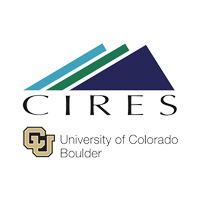ITGC: Is Thwaites Glacier contributing to sea level rise?
ITGC: Why should we care about Thwaites Glacier?
We are pleased to announce the 2019 International Thwaites Glacier Collaboration (ITGC) "Next Generation" Retreat for early career Thwaites researchers. The meeting will be held 27-30 of August, 2019 at Culford School, just outside Bury St Edmunds, about 40 km from Cambridge, UK. We hope the event will attract 35-40 participants. This is an opportunity for early-career scientists attached to ITGC to come together and set their own agenda, and explore their own ideas around the future of research on the West Antarctic Ice Sheet.
Leigh Stearns is a glaciologist who studies outlet glacier dynamics in Greenland, Antarctica, and Alaska using satellite remote sensing techniques, field based observations, and numerical modeling. She will spearhead the satellite remote sensing component of this project, and correlate ground-based measurements with those that are observable from space.
Alex Brisbourne is a glaciologist at the British Antarctic Survey. He uses a range of geophysical techniques to investigate the properties of glacial ice and what lies beneath it, helping to better understand how the ice sheets will evolve with our changing climate.
Alex is a Principal Investigator on the GHOST project. He will travel to Antarctica in 2023/2024 to use seismic and radar methods to investigate the sediment, hydrology, and bedrock beneath the Thwaites Glacier, and help feed this information into models of how the glacier may evolve in the near future.
Thiago Dias dos Santos is a postdoctoral researcher working on ice sheet numerical modelling for the PROPHET project.
Indrani Das will work on calculating basal reflectivity from radar data that will provide information about the bed conditions under Thwaites.
As a member of the PROPHET team, Brent Minchew specializes in remote sensing observations of surface velocity.
Jowan Barnes works as a modeller on the PROPHET project. He uses the ice-flow model Úa to investigate processes affecting the behaviour of Thwaites Glacier, and compares the results to those from other models. I will also couple Úa with ocean modelling to investigate the effects of a warming ocean on the basal melt rate.
Atsuhiro Muto is a glacial geophysicist who uses active-source seismology and gravity-anomaly data to reveal the geometry and physical properties of subglacial material and how they interact with the behavior of ice sheets and glaciers. As part of the TARSAN Team, he and his graduate student will use geophysical techniques to investigate the nature of sub-ice-shelf cavities and the grounding zones beneath Thwaites Glacier and Dotson Ice Shelf. As part of GHOST team, he will use geophysical data to reveal crustal structures and how they influence and interact with the overlying ice.












